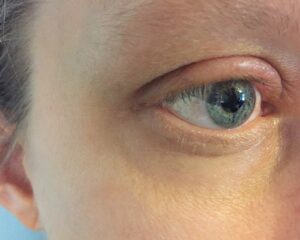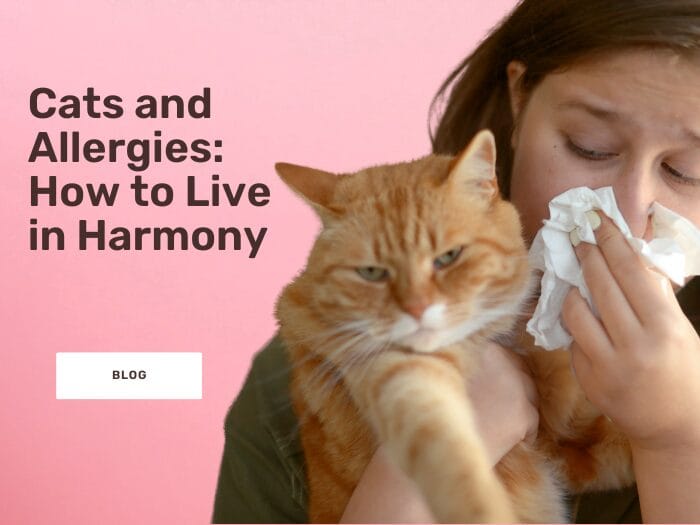When individuals develop allergies to cats, it’s often a reaction to a protein called Fel d 1 found in their saliva. Cats’ grooming habits, licking their fur to clean themselves, make their fur sticky, causing it to adhere to fabrics and furnishings. This widespread feline allergen can even be found in places where cats haven’t been physically present.
Airborne Particles and Allergic Reactions:

Cat hairs are lightweight and easily become airborne, remaining suspended for extended periods. Their small size makes them easily inhalable, leading to allergic rhinitis, commonly known as hay fever. In some cases, individuals with asthma may experience exacerbated symptoms due to their allergic reactions to cats.
Symptoms of an allergic response to cats vary in intensity, encompassing mild to severe manifestations. These may include: swollen, red, itchy, and watery eyes (allergic conjunctivitis); nasal congestion, itchy nose, and sneezing (allergic rhinitis or “hay fever”); ear discomfort resembling pain from an ear infection; scratchy or sore throat; coughing and wheezing; hives or a rash on the face or chest; and itching of the skin. In cases where a cat has interacted with an allergic individual through scratching, licking, or biting, redness and potential swelling in the affected area may occur. For those with severe allergies, the reaction can mirror that of a significant food allergy, necessitating immediate medical attention. Moreover, allergic responses to cats may exacerbate underlying conditions like asthma or atopic dermatitis (eczema), varying from person to person.
Research Findings:
A 2019 study by the University of Otago in New Zealand discovered cat allergens in the carpet of every primary school classroom tested. Alarmingly, 25% of these classrooms had allergen levels high enough to cause respiratory issues.
Myths about Hypoallergenic Cats:
Contrary to popular belief, there is no correlation between a cat’s hair length and the production of the Fel d 1 allergen. No cat breed can be deemed completely hypoallergenic. A hypoallergenic cat refers to a feline less prone to triggering allergic reactions in humans. While the subject is debated, both owner anecdotes and scientific studies indicate that certain breeds such as Siberian cats, Devon Rex, Cornish Rex cats, Abyssinian cats, Balinese cats, and others, particularly females, are inclined to exhibit lower levels of Fel d 1, the primary allergenic protein.
Diagnosis and Treatment:

If cat allergy symptoms arise, particularly in children, seeking a medical diagnosis through a skin prick test is crucial. Treatment often involves nasal cortico-steroid sprays and antihistamines. For those with asthma, consulting a doctor or asthma nurse about an asthma management plan is advisable.
Immunotherapy, while not a cure, can reduce sensitivity to cat allergens over time. Unfortunately, it is not funded in New Zealand, requiring discussion with a doctor and potential referral to a specialist.
Reducing Exposure:
For those living with cats, reducing exposure involves strategic measures. This includes keeping cats outdoors or limiting them to specific areas of the house. Other recommendations include using face masks during cat-related activities, washing hands promptly, and changing clothing to minimize contact.
Ventilation and Cleaning Strategies:
Improving ventilation through open windows, exhaust fans, and air cleaners with HEPA filters can help decrease airborne allergen levels. Soft furnishings like carpets, sofas, and mattresses can retain allergens even after a cat is removed. Strategies such as cleaning walls and washing cats with water have been shown to reduce surface allergens.
Conclusion:
Understanding cat allergies and implementing practical strategies to minimise exposure is crucial for individuals and families living with feline companions. From proper cleaning routines to lifestyle adjustments, these measures can significantly enhance the quality of life for those affected by cat allergies.
References
1.”SRI – Siberian Research Inc. – Siberian Allergen Levels“. Archived from the original on 16 July 2011. Retrieved 10 May 2011.
2. “10 Hypoallergenic Cats“. www.petmd.com. Archived from the original on 12 November 2020. Retrieved 28 December 2020.




